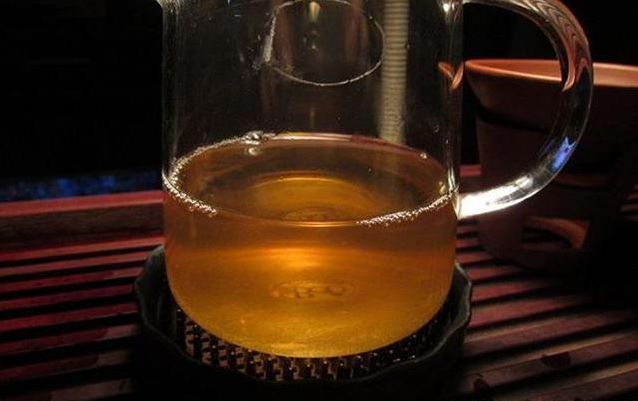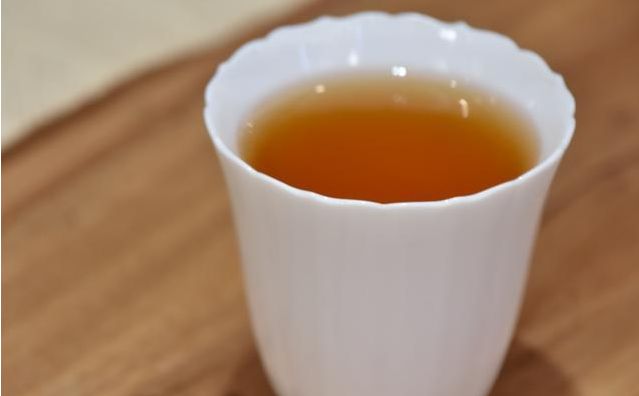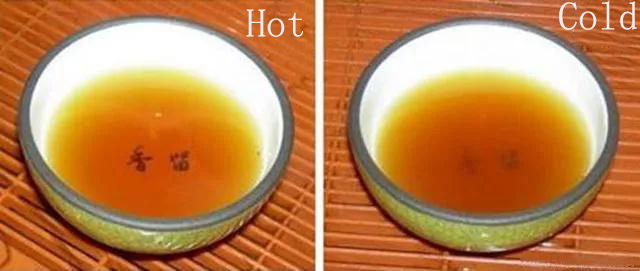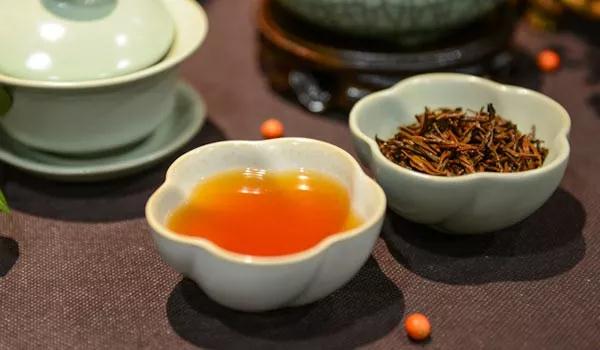Have you ever noticed a phenomenon, that after brewed black tea soup is cooled, the original bright tea soup finally becomes turbid?
Is that because that the quality of the black tea is not good?
As a matter of fact, in black tea terms, there is a phase called "turbid after being cooled", that is what it says.
So what’s the specific performance of black tea which becomes "turbid after being cooled"? How is the phenomenon that black tea becomes "turbid after being cooled" formed? What is the relationship between the phenomenon and the tea quality?

What is "turbid after being cooled"?
When we brew black tea (such as Organic Chinese Loose Leaf Tanyang Gongfu Hong Cha/Black Tea from Fujian China and Handmade Wuyi Wild Artisan Lapsang Souchong Whole Leaf Loose Black Tea Unsmoked Tongmu Spring), we can always find that the newly brewed black tea soup is clear and bright and not turbid at all, but if it is not drunk off while it is hot, the tea soup will take on the pale brown or orange milky turbidity phenomenon, which is called "turbid after being cooled".

How is “turbid after being cooled” formed?
The reason why black tea presents such a color is because tea polyphenols (mainly in the form of catechins) in tea will be converted into these three substances — theaflavin, thearubigins and theabrownin in the fermentation-oxidation process.
The higher the content of theaflavin is, the better the brightness of the tea soup color is.
Thearubigins, which are red, are the main body of the deep red color of the black tea soup.
Theabrownin, which is dark brown, is the factor contributing to darkening of the tea soup.
The water temperature for brewing black tea is relatively high, generally higher than 90℃, and the water temperature is an important factor affecting the solubility of theaflavin, so at high temperature, caffeine, theaflavin and thearubigins are in a free state respectively; as the temperature decreases, the association among them is constantly strengthened, produces a coagulation effect and makes the tea soup turns from clear to turbid, and the phenomenon of “turbid after being cooled” appears.
The phenomenon of “turbid after being cooled” may also appear in other types of tea, but more common in black tea.

What is the relationship between “turbid after being cooled” and the tea quality?
What are mentioned above are all about the relationship between the tea pigments and the tea soup color. In fact, the tea pigments are also closely related to the tea quality.
As a kind of pigment which is orange red in color and lustre and has astringency in black tea, theaflavin has the content accounting for 1%~2% of solid matter of black tea, and is also an important component related to the taste intensity and freshness of black tea.
Thearubigins are also an important component related to the taste of tea soup, and constitute the “soul” of black tea together with the theaflavin.
If the content of theabrownin is too high, the taste will become light.
We brew and compare the high-quality black tea with the inferior black tea, and find that the phenomenon of "turbid after being cooled" of the high-quality black tea is more obvious. The phenomenon of "turbid after being cooled" can be said to be a mark of high-quality black tea.

Theaflavin is also known as the "soft gold" in tea, and has certain effects on eliminating fatty liver and preventing liver cirrhosis and alcoholic liver. On this point, there are quite a number of academic papers. If you are interested in that, you can visit some professional academic websites for more information.
According to the relevant studies, it is found that the higher the contents of theaflavin and thearubigins are, the brighter the red color of the tea soup is, and the better the tea quality is; and the higher the content of theabrownin is, the darker the tea soup color is, and the worse the tea quality is. There is a zero-sum relationship among the contents of these three tea pigments.
It is generally believed that the appearance of "turbid after being cooled" means that the contents of theaflavin and thearubigins are high, and it is a manifestation of good tea quality. The phenomenon of "turbid after being cooled" generally appears in the high-quality tea (such as China Fujian Supreme Organic Authentic Chinese Black Tea Loose Leaf Jin Jun Mei/Golden Eye Brow/Golden Monkey Kim Chun Mei First Class Tongmu Wuyi Black Tea and Organic Lychee/Lichee Congou Black Tea/Lizhi Hongcha) and almost never appears in some poor-quality tea.



